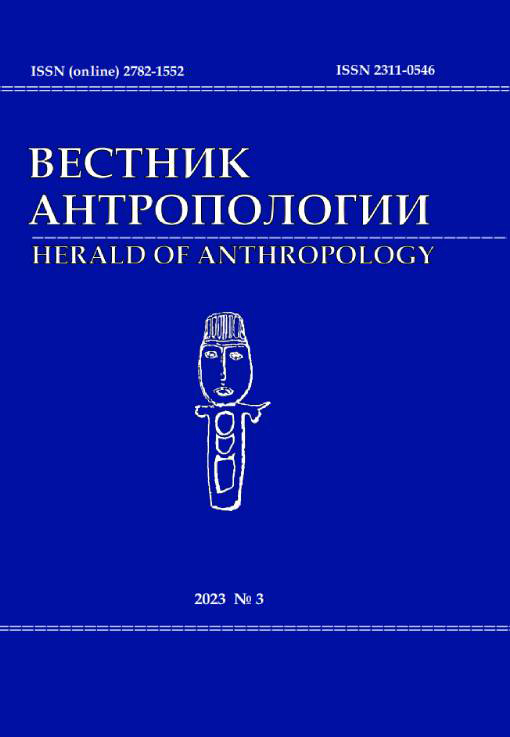Палеодемографическое исследование некрополя «Псебепс-3» Краснодарского края
DOI: 10.33876/2311-0546/2023-3/354-364
Ключевые слова:
археология, палеодемография, некрополь, возрастная когорта, средняя продолжительность жизни, процент детской смертности, пик смертностиАннотация
Проведено палеодемографическое исследование некрополя XIV – начала XV вв. на территории объекта археологического наследия «Поселение Псебепс-3» в Крымском районе Краснодарского края в 2016 г. Общее количество индивидов – 381. Группа весьма представительна, при этом кладбище формировалось немногим более века. Процентное соотношение взрослых мужчин и женщин составило 65,46% и 34,54%. Столь малое количество женщин по сравнению с мужчинами можно было бы объяснить тем, что вероятно женщины чаще умирали в детском возрасте. Средняя продолжительность жизни в группе оказалась равной 25,7 лет. Средняя продолжительность жизни взрослых женщин оказалась примерно на 5 лет меньше, чем у мужчин, что связано с высокой смертностью женщин в возрасте до 25 лет. Финальная возрастная когорта всей группы, так же, как и только женщин, не представительна. Высок процент индивидов в возрастной когорте 50+ лет у мужчин – 12,3%. Процент детской смертности – средний и составляет 31,23%. При этом почти половина детей умерли в первые пять лет жизни, а пятая часть детей умерли в возрасте до 1 года.






















